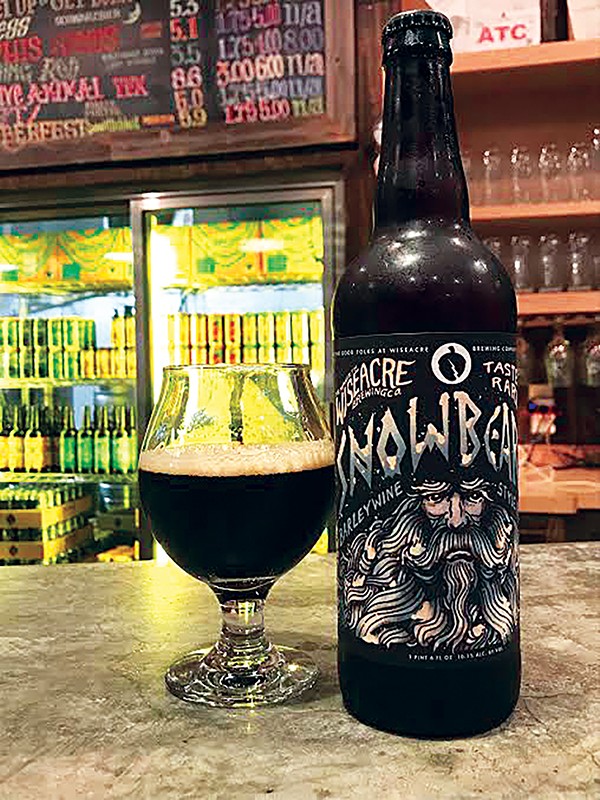So you like those big, bouncy beers — something a little different, hard to find, an ale that fights back? May I suggest barleywine?
What’s barleywine? It’s beer, only more so. It’s … it’s … well, that’s kind of a long story.
The Greeks made a fermented drink out of grain which they called Krithinos Oinos — or barley wine. Since you can’t really juice a grain, this stuff wasn’t really wine, but it wasn’t ale either. It was just barley wine, and that was that. The name crops up there and again throughout our drunken history, particularly in the 18th century, when brewers attempted to cross-sell between “beer” and “wine” cultures.
Where our story picks up is 1870, when the good people at the Bass Brewery produced their No. 1 Barley Wine-style ale. Whatever the earlier stuff was, this was a proper ale. It was a marketing gimmick — or possibly an early exercise in risk-management. Barleywine traditionally has an ABV running anywhere from 8 to 16 percent. Before the era of “big beers,” that was the sort of alcohol content more often found in wine. Yet here the Brits were, drinking it out of those big glasses. Bass No. 1 has been the recipe from which all modern barley wines are derived.

Wiseacre’s Snowbeard Barleywine
Yet it would be another century before the style came to American shores. In 1965, Fritz Maytag liked the beer at Anchor Brewing so much that he bought it, just on the eve of the company shutting its doors. Maytag probably didn’t intend to change the American beer scene the way he did; he just liked the beer. But 10 years later, Anchor Brewing was booming and introduced Old Foghorn Barleywine. The term “barley wine” became one word, not for any technical reason, but because the word “wine” chapped the distributors. Having gone and bought the place, Maytag thought he’d like to keep the doors open.
To say the style took off like a rocket might be a stretch, but not much of one. Barleywine brewers pack in extra malt to increase the amount of fermentable sugars, which makes barleywine high in alcohol, but also very sweet. To counteract the sweetness, they then go heavier on the hops. The logic is something akin to chain-smoking cigarettes to get the taste of tequila out of your mouth. Somehow, here it actually works. The end result is — words fail me — a “complex” beer.
Being the first American barleywine out of the gate, Old Foghorn was, and still is, closer to the English style, which tends to be more restrained as far as hops and barley. Since then, however, a lot of different interpretations of the old No. 1 have cropped up, and a uniquely American style has developed — more hoppy and bitter. For a bigger bang, Sierra Nevada Big Foot Barleywine is considered the first — and one of the best of the American style. It is a tricky beer, and brewers like to show off, so as far as taste profiles, barleywines have a lot of wiggle room from light and hazy in color to almost stout.
They are, however, often hard to find. What’s easy to find is the Wiseacre Taproom on Broad. Waltz on in and grab a 22-ounce bottle of their Snowbeard Barleywine to go. It’s Wiseacre, so it’s a good-looking bottle (but unavailable on tap, and you can’t consume on premises), and inside it’s a big boom of malt and caramel and weighs in at 10.1 percent ABV. Pairing it with a food truck caravan that gathers behind the Wiseacre taproom is probably not the best way to go. Snowbeard wants some good red meat or a stinky blue cheese.